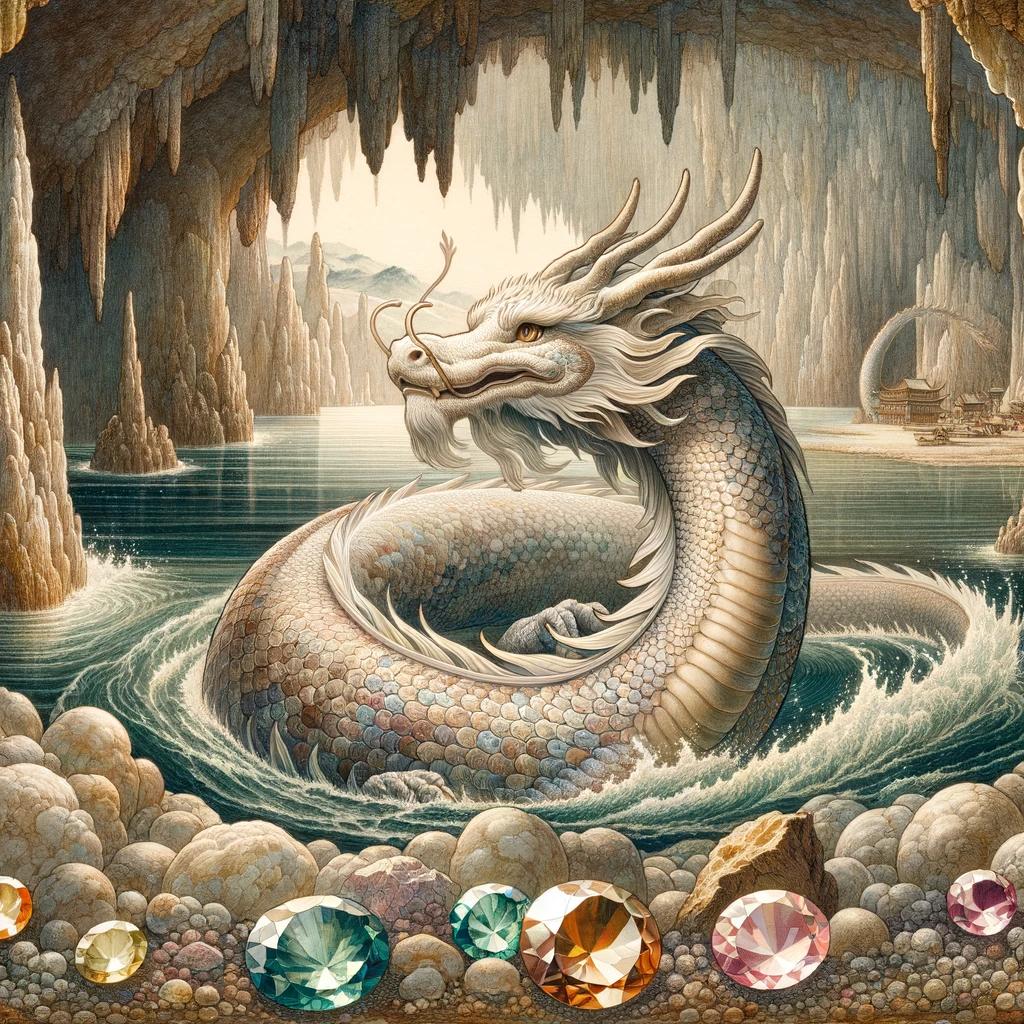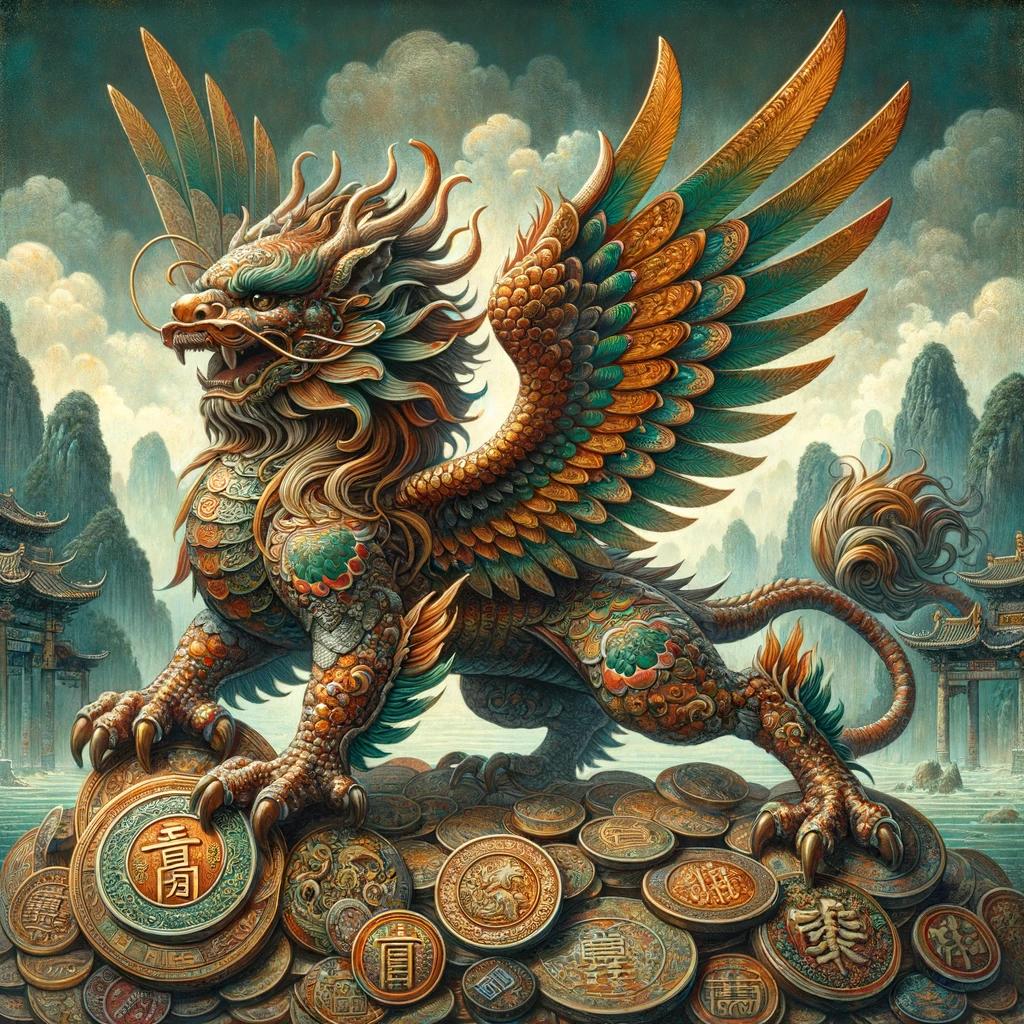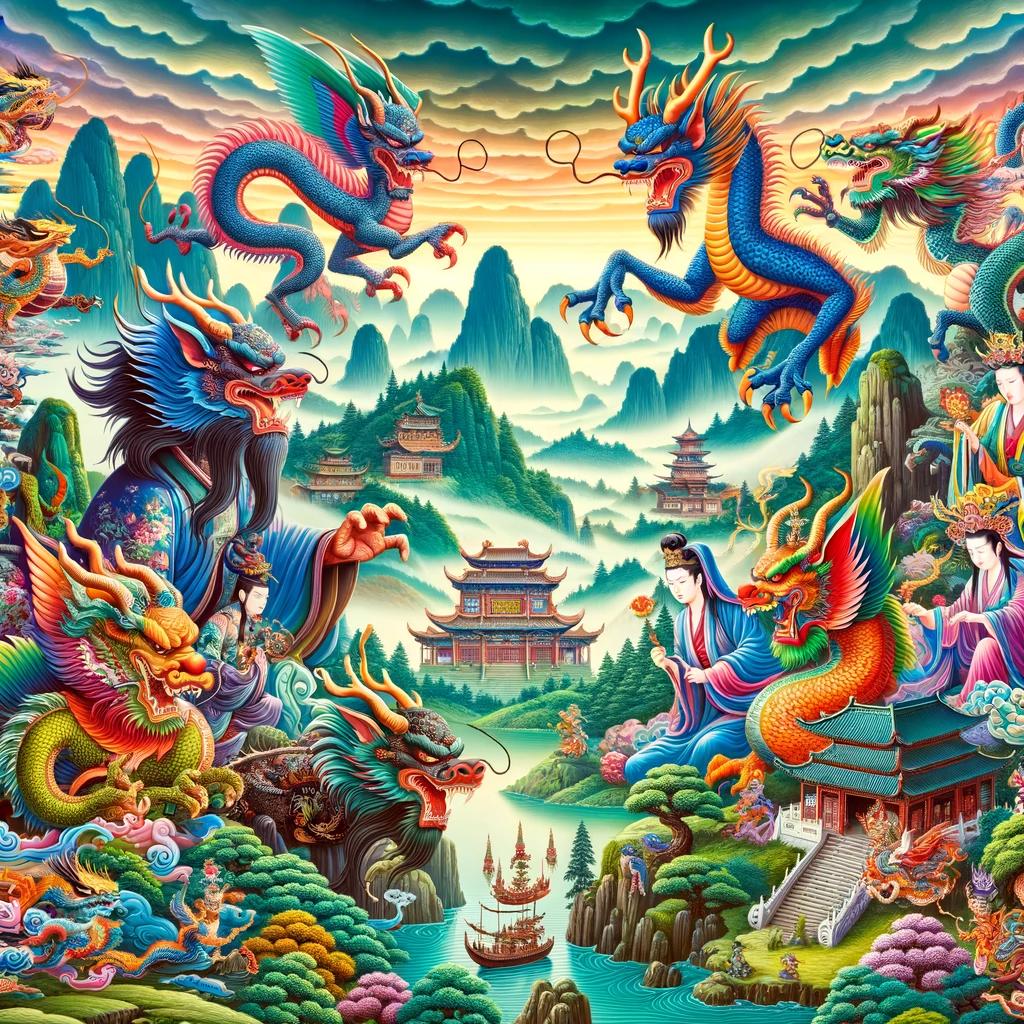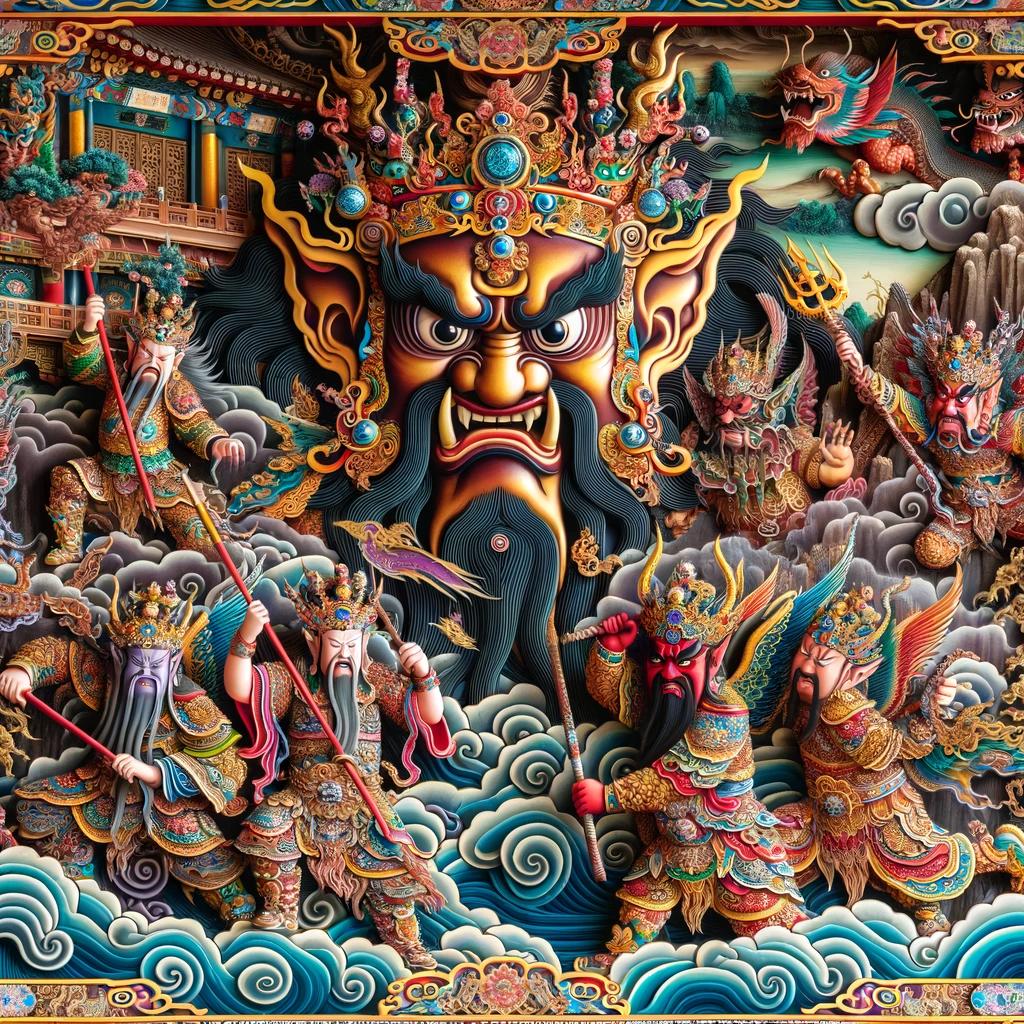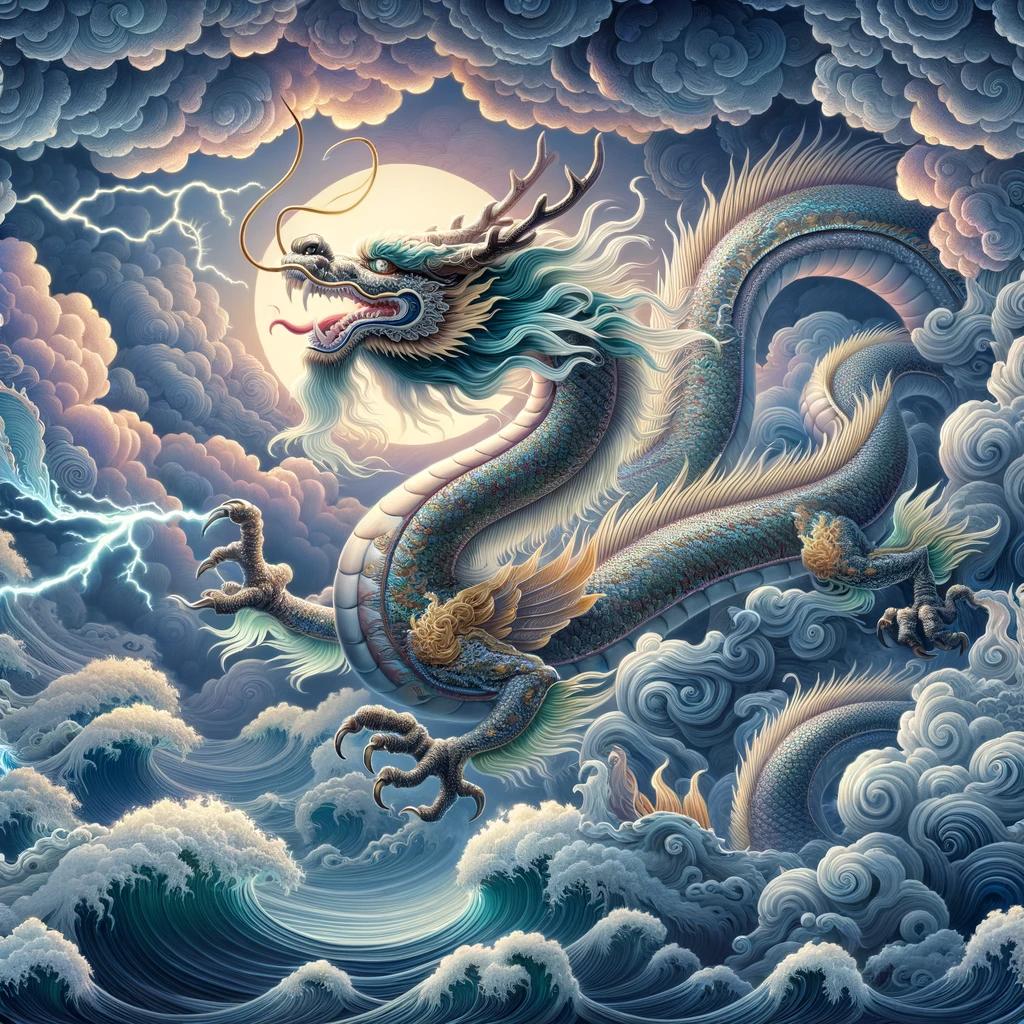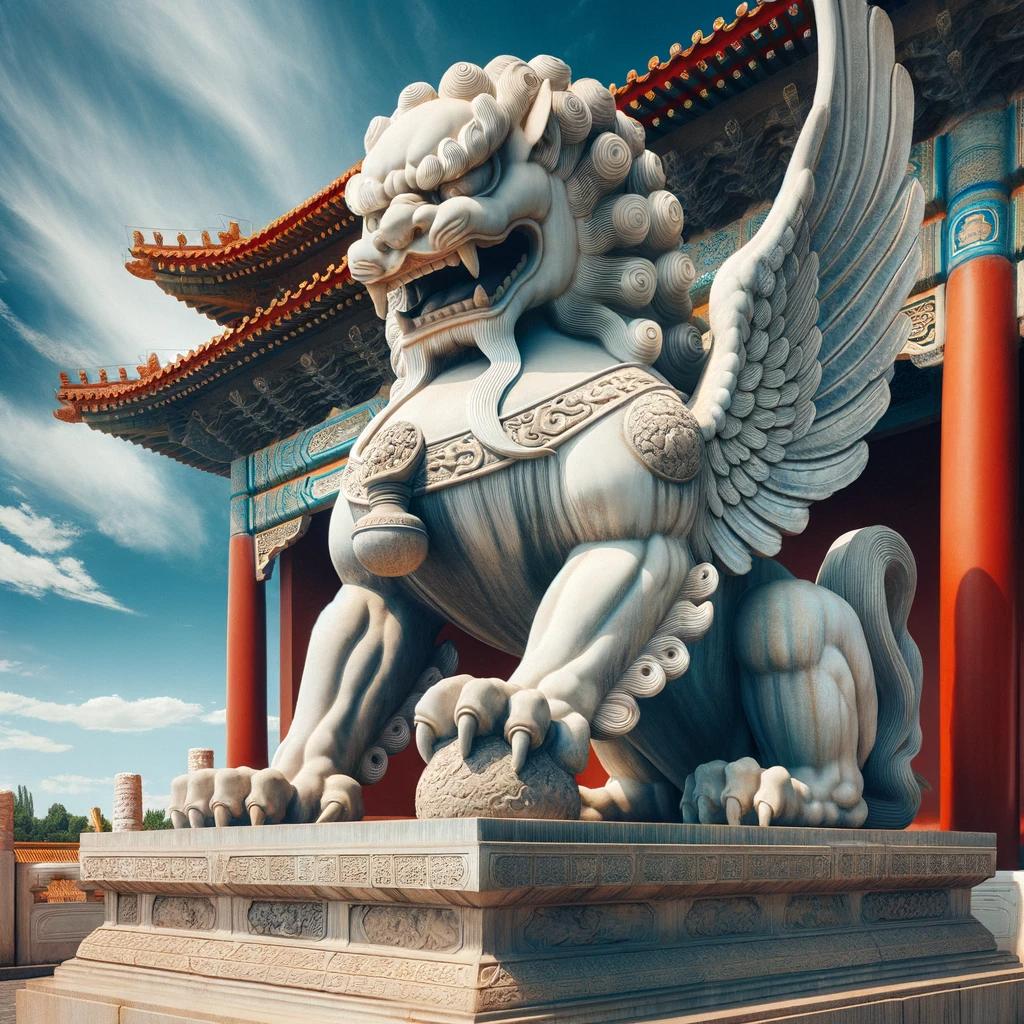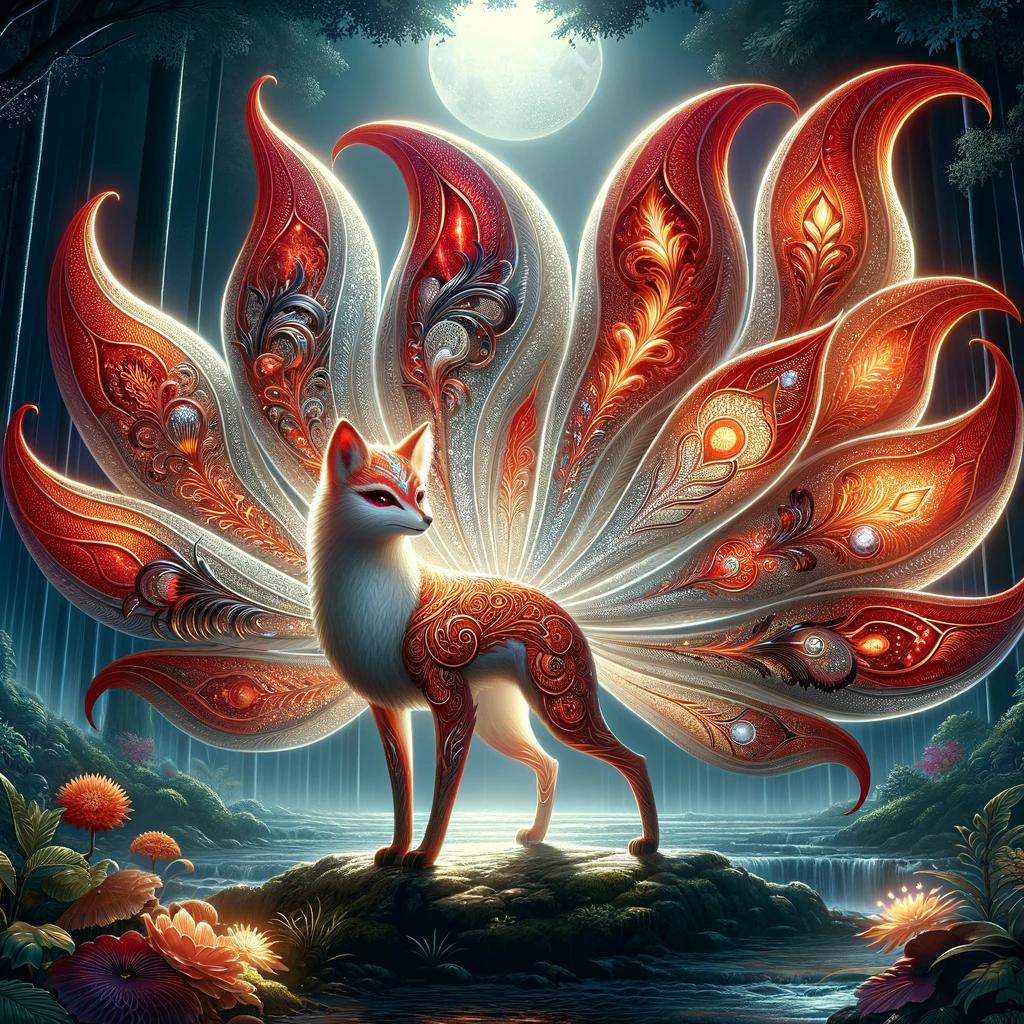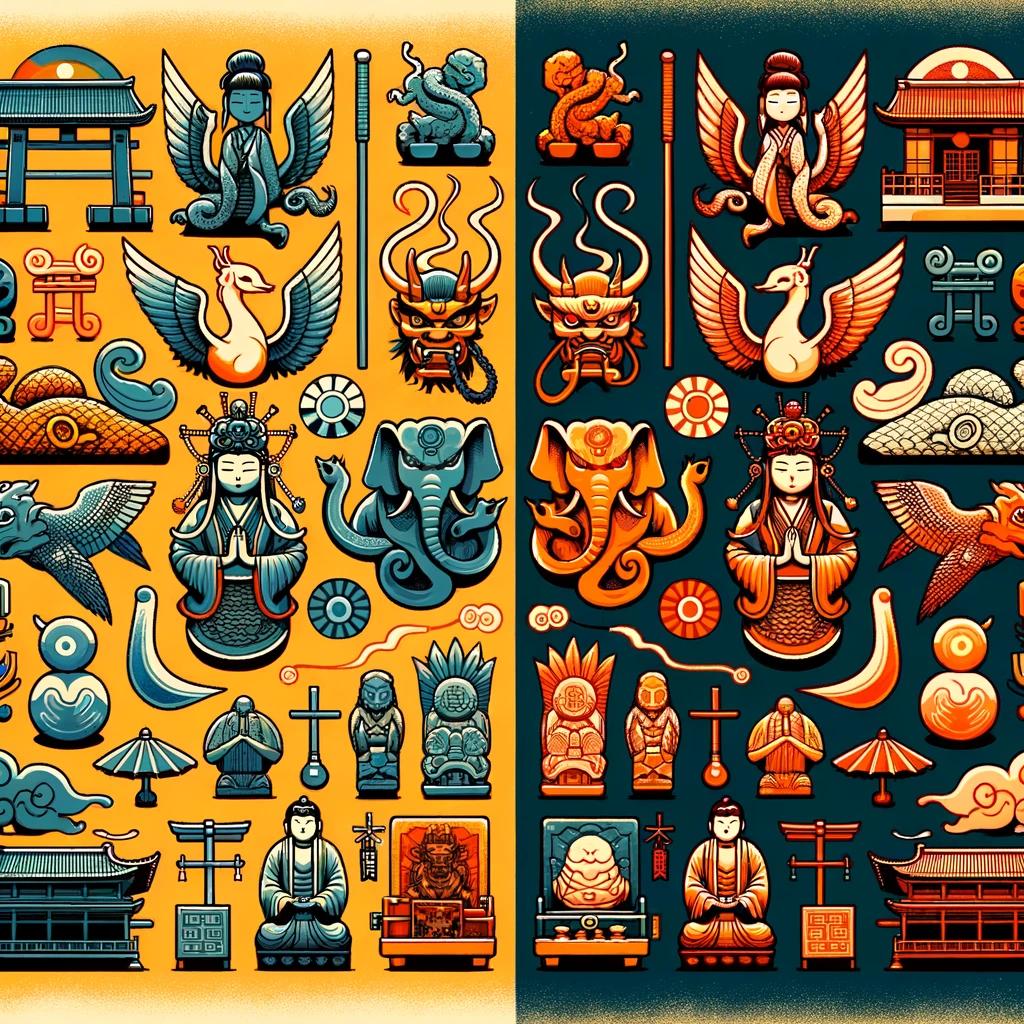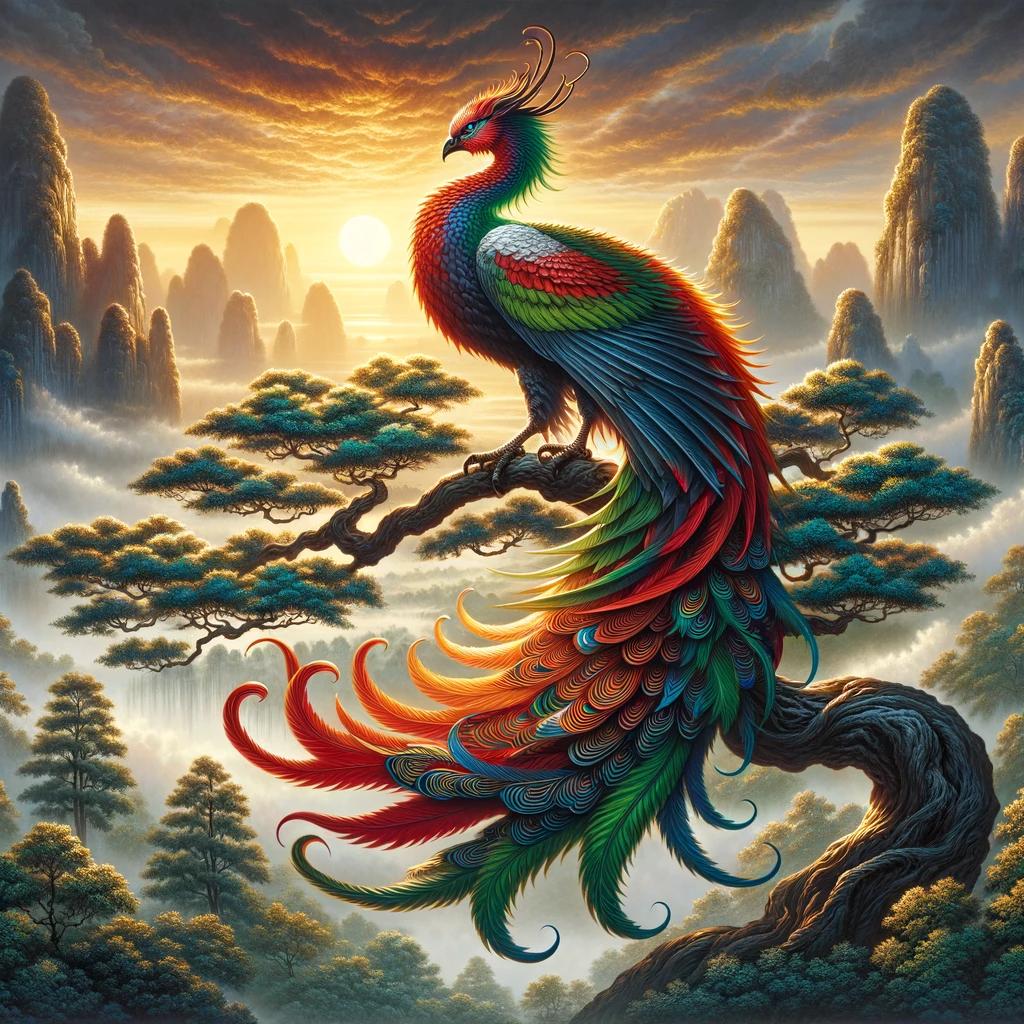Dilong Dragon: Exploring the Mythology of the Chinese Earth Dragon
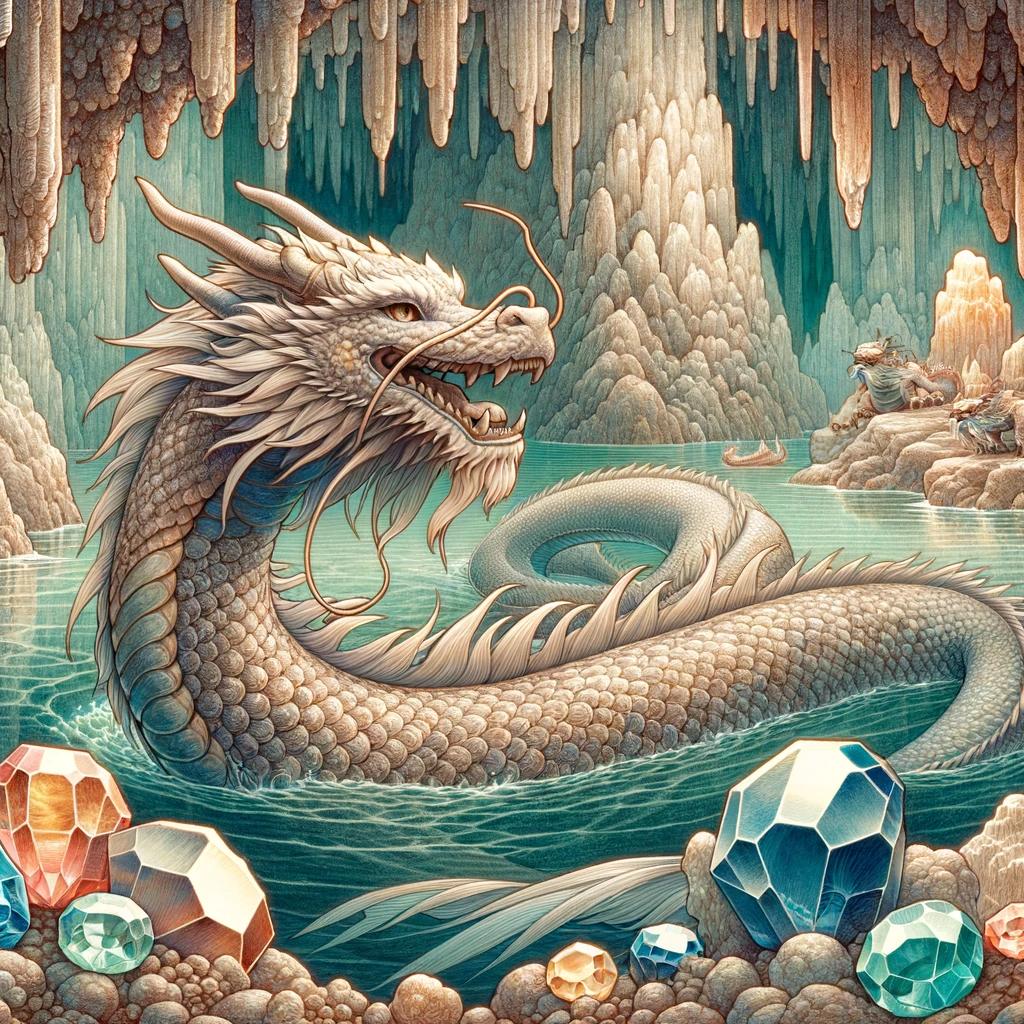
The Dilong Dragon holds significant importance in Chinese mythology, representing the Earth Dragon and its dominion over waterways. It is believed to transform into the Dragon Kings, known as Longwang, who dwell in the four oceans, protecting sailors.
Chinese culture reveres various types of dragons, each with unique characteristics and symbolism. Tianlong Chen, the Heavenly Dragon, safeguards the celestial palace, while Shenlong Dragon connects heaven and earth.
Earth dragons, like the Dilong Dragon, watch over rivers and streams. Explore the mythology and cultural significance of these powerful creatures in Chinese folklore.
The Dilong Dragon: Exploring its Mythology in Chinese Culture
The Dilong Dragon holds great significance in Chinese mythology as a powerful and revered creature.
This section delves into the origins, characteristics, symbolism, and role of the Dilong Dragon within Chinese folklore.
Origins of the Dilong Dragon in Chinese Mythology
According to Chinese mythology, the Dilong Dragon is known as the Dragon of the Earth. It is believed to have control over waterways, transforming into the Dragon Kings who protect sailors in the four oceans.
The Dilong Dragon is considered one of the subterranean dragons that dwell on Earth, guarding rivers, streams, and bodies of water.
Characteristics and Symbolism of the Dilong Dragon
In contrast to celestial dragons, the Dilong Dragon is terrestrial and is considered relatively weaker. It is often associated with the element of Earth and symbolizes the connection between humans and nature.
Legends suggest that encountering the Dilong Dragon is considered a sign of impending defeat.
The Role of the Dilong Dragon in Chinese Folklore
The Dilong Dragon plays a significant role in Chinese folklore, showcasing its connection to waterways and its duty to monitor and protect them. Its presence in myths and stories reflects the cultural beliefs and reverence for the power of nature.
The Dilong Dragon’s role in Chinese folklore highlights its importance in the spiritual and mythical realm of Chinese culture.
Chinese Dragons: An Ancient and Powerful Symbol
Chinese Dragons hold a significant place in the country’s culture and history. They are revered as ancient and powerful creatures, embodying various qualities and symbolism. Let’s delve into the different types of Chinese dragons, explore the legends and stories associated with them, and understand their cultural significance and beliefs.
The Different Types of Chinese Dragons
Chinese mythology portrays a diverse range of dragons, each with its distinct characteristics and roles. Some notable types include:
- Long – Iconic celestial dragons associated with imperial power and represented in art and literature.
- Tianlong – Heavenly dragons guarding the celestial realm and supporting the gods.
- Shenlong – Divine beings said to control the weather and bring rain and wind to the mortal realm.
- Fucanglong – Dragons guarding hidden treasures and underground wealth.
- Zhulong – Mythical creatures resembling serpents that control time and the seasons.
Legends and Stories Surrounding Chinese Dragons
Chinese folklore is filled with captivating legends and stories about dragons.
These tales often highlight the dragons’ benevolence, wisdom, and connection to the natural world. They depict dragons aiding heroes, granting wishes, and offering protection. Some popular legends include:
- The Dragon Gate’s Transformation – A carp’s journey to become a dragon after leaping over the Dragon Gate waterfall.
- Nezha and the Dragon King – Nezha, a mighty warrior, confronts the Dragon King to protect his village from drought.
- The Dragon Boat Festival – The annual festival commemorating the poet Qu Yuan includes dragon boat races to honor the dragons and seek their blessings.
Cultural Significance and Beliefs Associated with Chinese Dragons
Chinese culture reveres dragons as symbols of luck, power, and prosperity.
Dragons are believed to bring good fortune and ward off evil spirits. They are deeply integrated into various celebrations and customs, including the dragon dance during the Lunar New Year. Dragons also hold a symbolic connection to the Chinese imperial dynasties, often associated with emperors and their divine authority.
Furthermore, dragons embody the balance between yin and yang, two opposing forces in Chinese philosophy, representing harmony and cosmic order. Their influence extends to medicine, art, architecture, and spiritual practices, lending an enduring legacy to the Chinese cultural fabric.
Tianlong Chen: The Heavenly Dragons in Chinese Mythology
Tianlong Chen, also known as the Heavenly Dragons, hold a significant role in Chinese mythology. These majestic creatures are revered as protectors of the Celestial Palace, the heavenly realm where the gods reside.
Tianlong Chen’s Role as Protectors of the Celestial Palace
According to ancient legends, Tianlong Chen dragons are entrusted with safeguarding the sacred Celestial Palace from any malevolent forces. They serve as loyal guardians of this celestial abode, ensuring its sanctity and harmony.
It is believed that their presence brings blessings and divine protection to both the palace and its celestial inhabitants.
Legends and Attributes of Tianlong Chen Dragons
Legends surrounding Tianlong Chen dragons tell tales of their immense power and extraordinary abilities. These majestic creatures are often depicted with serpentine bodies, adorned with colorful scales that shimmer like precious gemstones.
They possess the ability to fly through the heavens effortlessly and emit celestial light from their bodies.
It is said that Tianlong Chen dragons can control the weather, bringing rain, wind, and storms at their command.
They are associated with the forces of nature and hold the power of divine intervention. These dragons are also believed to possess great wisdom and are sought after for their guidance and counsel.
Tianlong Chen Dragons in Art and Architecture
The awe-inspiring presence of Tianlong Chen dragons has been depicted in various forms of Chinese art and architecture. Their majestic images can be seen adorning ancient temple walls, palace roofs, and intricate artwork.
These depictions symbolize the divine power and protection associated with these heavenly creatures.
In traditional Chinese paintings, Tianlong Chen dragons are often portrayed gracefully soaring through the heavens, their bodies intertwined amidst clouds and celestial scenery.
Their representation in art serves as a visual reminder of their celestial realm and revered status in Chinese culture.
In architecture, Tianlong Chen dragons are intricately carved into pillars, roofs, and ornate facades, serving as both decorative elements and symbolizing their protective influence over the sacred spaces they guard.
Their presence adds a sense of grandeur and divinity to the structures they adorn.
Shenlong Dragon: Connecting Heaven and Earth
The Shenlong Dragon is a powerful and revered figure in Chinese mythology, known for its connection between heaven and earth. This celestial dragon holds great influence over natural phenomena and is considered a benevolent force in Chinese culture.
Shenlong Dragon’s Influence on Natural Phenomena
The Shenlong Dragon is believed to have the ability to control and influence natural elements such as rain, wind, and thunder. It is said that its movements and actions directly impact the weather patterns and climatic conditions in the earthly realm.
The dragon’s presence brings about harmony and balance in the natural world, ensuring prosperous harvests and favorable conditions for human livelihoods.
Relationships between Shenlong and Other Chinese Dragons
As a celestial dragon, the Shenlong Dragon maintains a unique connection with other Chinese dragons. It is often depicted alongside other dragon deities, such as the Tianlong Chen, in various mythological and artistic representations.
While each dragon has its own distinct role and attributes, they collectively symbolize the celestial order and cosmic harmony within Chinese culture.
Shenlong’s Role in Human Affairs and Worship
The Shenlong Dragon is not only revered for its influence on natural phenomena but also for its role in human affairs. It is considered a guardian deity, protecting people from calamities and bringing blessings upon communities.
Worship of the Shenlong Dragon is prevalent in Chinese traditions, with temples and shrines dedicated to its veneration. Many seek its blessings for prosperity, good fortune, and spiritual guidance in their lives.
The Significance of Earth Dragons in Chinese Mythology
The Dilong Dragon plays a pivotal role in Chinese mythology as an Earth Dragon, holding sway over its terrestrial domain. Let us delve into the captivating world of Dilong Dragons and explore their significance in Chinese culture and beliefs.
Dilong Dragon: The Earth Dragon and its Domain
The Dilong Dragon, also known as the Earth Dragon, is deeply connected to the land, rivers, and streams. Unlike celestial dragons, the Dilong Dragon dwells beneath the Earth’s surface, diligently monitoring and safeguarding the waterways that flow through its domain.
These powerful beings are revered for their ability to control and influence the natural elements related to water.
Stories and Legends about Dilong Dragons
Throughout Chinese folklore, captivating stories and legends feature the Dilong Dragon. These mythical creatures are often depicted as protectors of the rivers, defending them against any harm or disturbance. Tales abound of their encounters with humans, either serving as benevolent creatures aiding those in need or embodying ominous omens that foretell imminent defeat.
One legend tells of a Dilong Dragon emerging from the depths of a river to rescue a village from a catastrophic flood, illustrating their compassionate nature and their connection to water-related events.
Another narrative warns of seeing a Dilong Dragon as a harbinger of misfortune, symbolizing impending failure or loss.
Dilong Dragon’s Impact on Chinese Culture and Beliefs
The Dilong Dragon holds profound cultural significance within Chinese society. Its portrayal as a guardian and overseer of waterways represents the important role of rivers and streams in sustaining life and facilitating transportation in ancient China.
The Dilong Dragon’s presence in mythology has influenced various aspects of Chinese culture, including art, literature, and religious beliefs.
These majestic beings have been depicted in intricate paintings, sculptures, and other forms of artistic expression, showcasing the reverence and fascination that Chinese artists have had for the Dilong Dragon throughout history.
Additionally, their portrayal in folklore has shaped the beliefs and superstitions of the Chinese people, emphasizing the respect and caution surrounding water-related activities.
In conclusion, the Dilong Dragon’s significance as an Earth Dragon in Chinese mythology is rooted in its role as a guardian of rivers and streams.
Through captivating stories and legends, the influence of Dilong Dragons on Chinese culture and beliefs continues to endure, captivating the imaginations of generations and reminding us of the inseparable connection between humans and the forces of nature.
.











